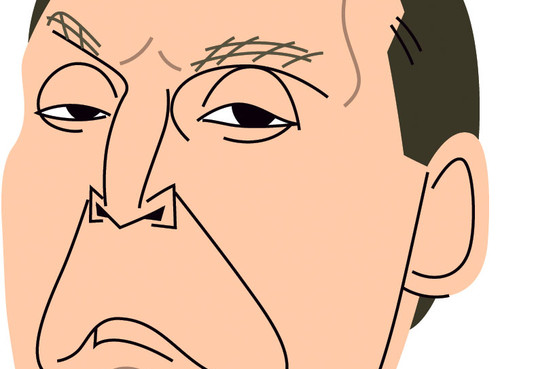“Lehman was forced into bankruptcy not because it neglected to act responsibly or seek solutions to the crisis, but because of a decision, based on flawed information, not to provide Lehman with the support given to each of its competitors and other nonfinancial firms in the ensuing days.”
-Richard S. Fuld Jr., Lehman Brothers former chief executive (NYT)
>
The fantasy world inhabited by Lehman Brothers CEO Richard Fuld was given a surprisingly sympathetic ear from an unexpected forum yesterday: The Financial Crisis Inquiry Commission.
This is a deeply disturbing development, as it leads to the unfortunate suspicion that the FCIC does not have the slightest clue as to the causes of the housing collapse, recession and and market crash.
There are two issues here: The first is “why did Lehman collapse?” The second is “Why didn’t the Fed rescue them?” Let’s look at both.
I’ve spilled far too many pixels explaining why Lehman crashed and burned, but for those of you who may have forgotten:
1. Under-capitalized, over-leveraged: Lehman Brothers was the biggest bankruptcy in US history. To avoid that fate, LEH mneeded to be sufficiently capitalized, and use only moderate leverage (LEH embraced 40 to 1 leverage). Rather than have a sufficient capital base, the bank chose instead to chase profits: A greater capital cushion meant less underwriting activity, smaller gains, greater risk. The downside of having a de minimus capital structure is when bad investments are made, there is no room for error.
2. Bad Modeling Assumptions: LEH made numerous false assumptions in their econometric models: a) Residential RE never goes down; b) The derivatives market is always liquid, with ready buyers available; c). We can always borrow short and lend long with no liquidity concerns; There was substantial evidence and warnings that ALL of these assumptions were false, but they were ignored by management as a risk to profits.
3. Excess RE Exposure: Lehman was the biggest securitizer of mortgages on Wall Street. They underwrote more mortgages than any other bank on Wall Street. By 2004, LEH was originating $40B per year in mortgages to feed their own CDO machine (which as Roger Lowenstein has pointed out, was more lucrative than the stock and bond business).
4. Reliance on Ratings: Lehman’s entire business model was predicated on the ratings of Moody’s and S&P being reliable. However, LEHMAN was one of the prime purveyors of credit rating payola — they were paying the NRSROs a fee to slap a Triple AAA rating on junk paper. If they did not know the credit ratings were utterly worthless, they sure should have.
5. CDO Ownership: Lehman kept the senior-most layers of CDOs they created for themselves, but bought credit default swaps on them “for safety.” Consider that they were not confident enough of the models which forecast the solvency of those tranches, yet they used the same models to determine AIG was a credit worthy counter party to insure them.
That’s why LEH collapsed, and it was apparent (at least to us) back in June 2008 they were in trouble.
Why did the Fed not save them? There were several reasons:
1. One off: The Bear Stearns bailout was supposed to be a “one of a kind,” not the start of a series of rescues. The Fed hoped to hold the line at only one such taxpayer backed rescue. The fear was if they did a 2nd, they could not say no to the rest of the Street. Lehman was in effect the Fed’s Maginot Line (it also was out flanked and rendered strategically useless).
2. Fed Overreach: Bernanke was widely criticized for the Bear rescue as a huge overstep of authority. Even former Fed Chair Paul Volcker overcame the inherent reluctance of formerFOMC chairs to to criticize sitting Fed heads to express his concern about the over reach and power grab.
3. No to Private Rescue: Dick Fuld turned down a private rescue just months earlier. Warren Buffett offered Fuld billions, plus the equivalent of the Berkshire Hathaway Good corporate Housekeeping seal of approval. FULD TURNED BUFFET DOWN. How could the Fed, in good conscience, bail out a firm that refused to accept a Buffett rescue? Indeed, his terms for LEH were far more generous than what BRK ultimately offered Goldman Sachs and GE.
4. Insolvent: Lehman books are why a loan never happened. LEH was essentially insolvent, with liabilities that vastly outweighed what few assets there were. This insufficiency is why a loan was simply not possible — it was considered a guaranteed loss.
5. Moral Hazard: How much of a clusterfuck must any financial firm be before a rescue is deemed an outrageous moral hazard? For the 3rd and 4th reasons above, Lehman was believed to be “Beyond rescuing.” And it was due to the specific choices Lehman’s management made.
To think that Fuld’s brand of psychopathic revisionism was given a sympathetic hearing is deeply disturbing.
I haven’t written this before, but now I am compelled to: I now fear the FCIC report is going to be an ideological farce. The nightmare report scenario is a collection of false statements, half truths, misunderstandings, confirmation biases, and rhetorical nonsense.
>
Previously:
Financial Sector: Beware LEH, CIT (June 3rd, 2008)
Understanding Lehman & AIG (March 22nd, 2009)
Bear Stearns, Lehman Execs Kept Billions . . . (November 23rd, 2009)
Grading Financial Regulatory Reform (June 25th, 2010)
>
Update: September 4, 2010, 9:18am
Barron’s has the caricature of the imperial, sneering Lehman CEO that is picture perfect to my post:
>



What's been said:
Discussions found on the web: